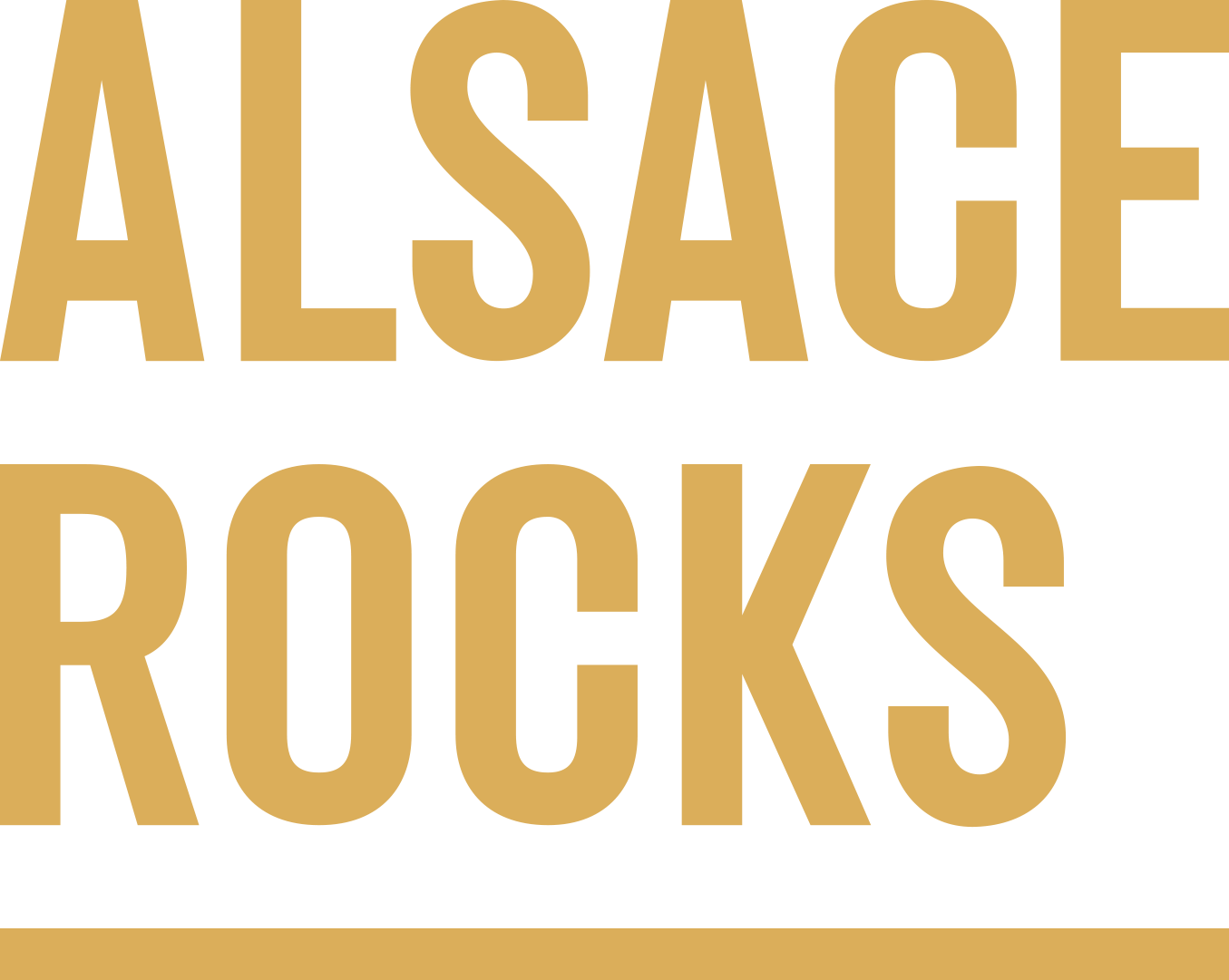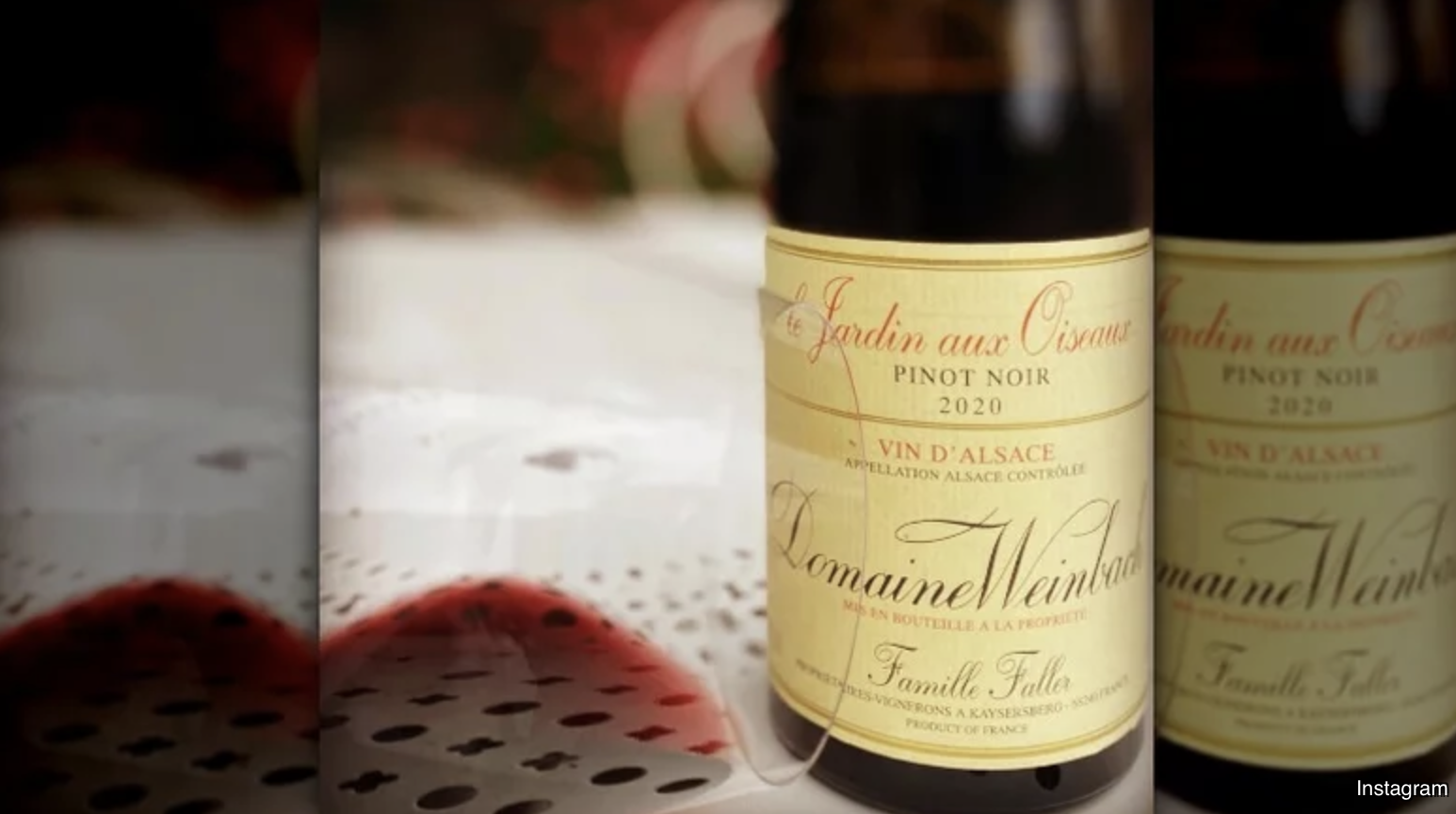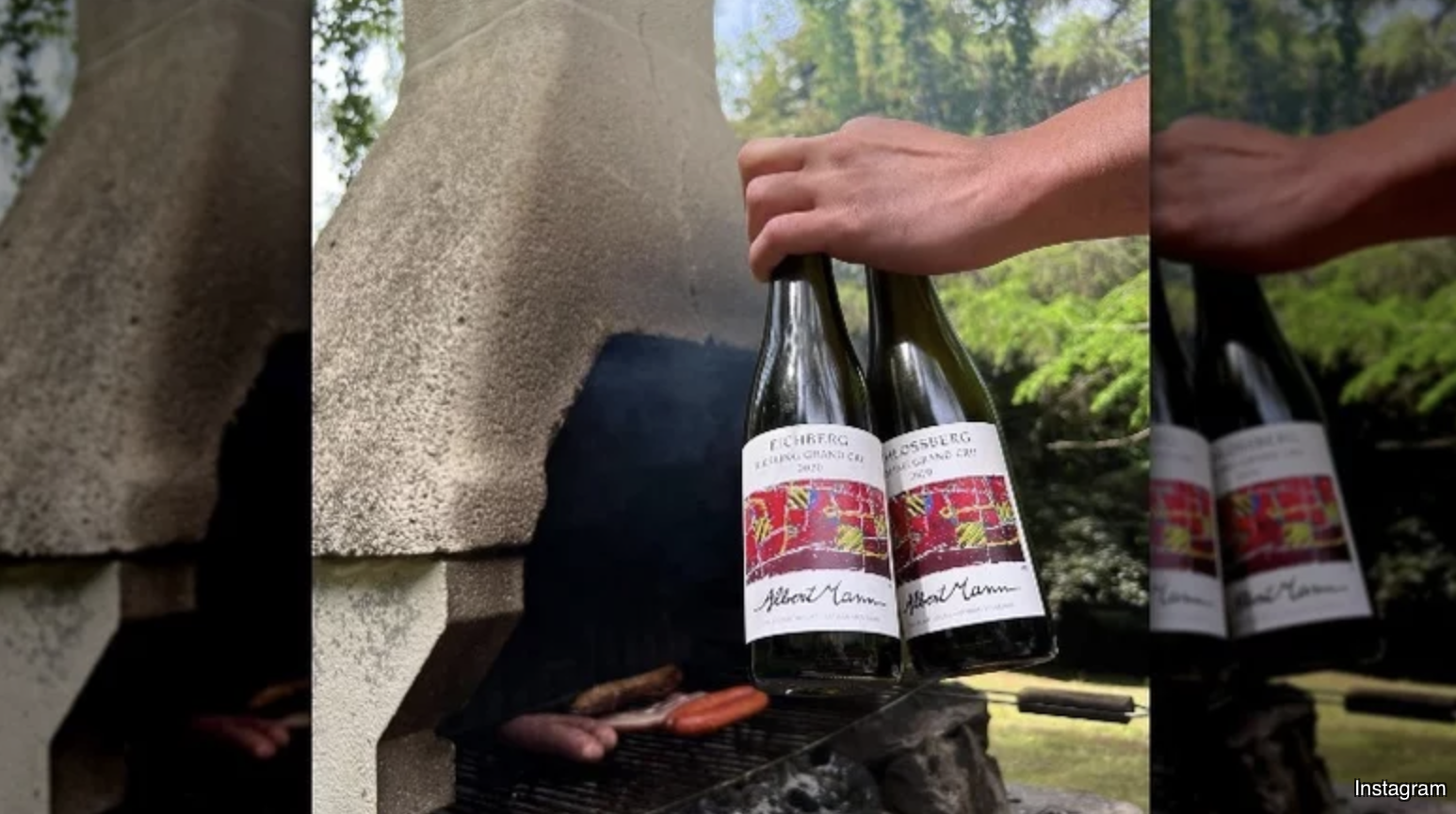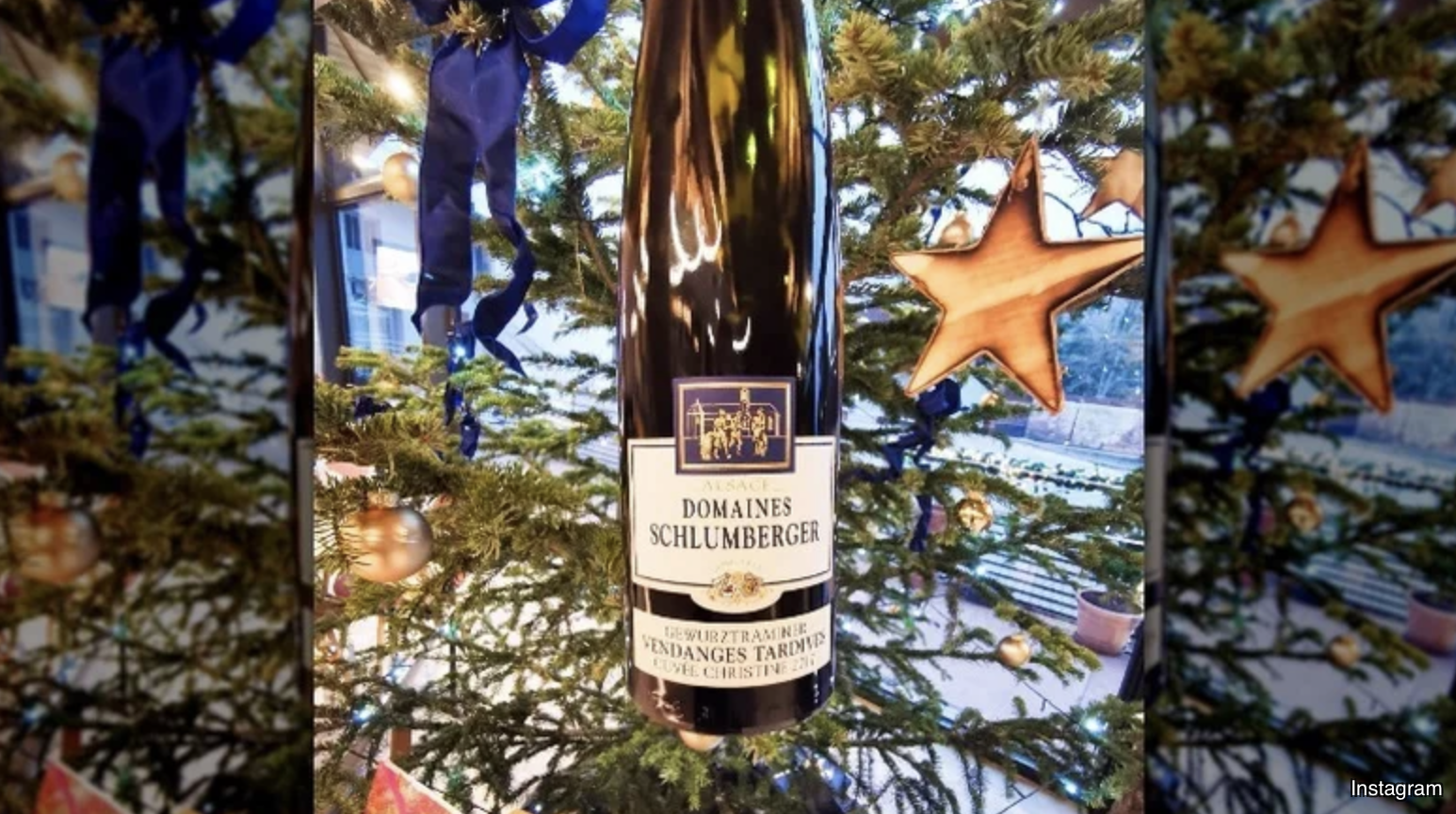BY SAMANTHA MAXWELL
Champagne, Bordeaux, and Burgundy may get all the love when it comes to French wine regions, but if there's one exciting region that shouldn't be missed, it's Alsace — especially if you're a true white wine lover. Alsace's location on the map is a huge part of what makes it so special. It's right on the border with Germany, and throughout the years, it's been passed back and forth between the countries as a result of war, strife, and political conflict, according to the British Council. The influence of both countries has made its mark on the region, making it a desirable destination for both wine and history lovers.
But just what's so special about Alsatian wine? The cool climate produces aromatic, refreshing wines that are often less expensive than many of their other French counterparts, according to Nader Asgari-Tari, wine director at Boston's Bin 26 Enoteca. Many of the winemakers in this region are dedicated to sustainable farming practices, employing both traditional methods and cutting-edge technology to ensure the future success of their vineyards for generations to come. It makes sense — some of the estates in Alsace have been producing wine for over 10 generations, per France24, so it's a region that's had plenty of practice with adaption and sustainability.
Pour yourself a glass, and let's take a deeper dive into the basics of Alsatian wine.
The Vosges Mountains play an important role in producing the region's wine
There are two main geographic factors that make Alsatian wine what it is: the Vosges Mountains and the Rhine River (via Grape Collective). The mountains work by preventing rain and clouds from making their way to the region, which makes Alsace one of France's both driest and sunniest regions. Many of the best vineyards face south, allowing the slopes access to that warm sun throughout the summer months. This sunlight helps ripen the grapes.
The clay soils near the Rhine River produce richer, more full-bodied wines and are perfect for grapes like Pinot Noir and Gewürztraminer, per Wine Folly. However, grapes produced on the rocky, granitic slopes will result in more mineral-forward wines — riesling is big here. Because this area boasts such a wide array of soil types, Alsatian wines have incredible range. While some of the flatter areas of the region can be mechanically harvested, some of the best wines come from steep slopes — these grapes have to be harvested by hand. This is a time-intensive and costly process, but it's worth it for winemakers who are dedicated to producing top-quality wine.
Alsatian wines are known for their quality ... and affordable price point
There is affordable wine everywhere, but a lot of it can feel uninspired or uninteresting. But if we're talking the good-quality stuff, it is often prohibitively expensive, especially when it comes from France's most famed wine regions: Bordeaux, Burgundy, and Champagne chief among them. Drinkers who are looking for delicious, high-quality wines on a budget may find more success with premium Alsatian wines. The region is known for its fantastic-but-affordable selections, often at a significantly lower price than what you'd expect from other regions. Nader Asgari-Tari tells Tasting Table that it's possible to find great Alsatian wines at a comparatively lower price point "because volume of production is higher and because of how large the area of available land that is deemed of a good to high quality is substantially higher [than other regions]."
According to sommelier Eric Hastings, "The grand cru wines of Alsace offer a tremendous quality/price ratio" (via Forbes). Price isn't always correlated with quality, so for those looking for quality wines without a shock-inducing price tag, Alsace offers plenty to love.
The majority of Alsatian wines are white wines
There are exceptions to the rule, but Alsace is mostly known for its aromatic white wines, according to VinePair. Some of these grapes include riesling, gewürztraminer, pinot gris, pinot blanc, muscat, and sylvaner. Many of these wines are famed for their minerality and freshness aided by Alsace's notoriously cool climate. They're often fruit-forward as well, but don't assume that means they're all sweet. Gewürztraminer is known for its tropical fruit flavors and can be dry or off-dry, while the somewhat less-popular sylvaner can offer an impressive display of both honey notes and intense acidity.
There's a good chance you've already explored plenty of rieslings and pinot gris if you're already someone who loves white wines. But if you want to get a taste of Alsace while experiencing something unique, try some of the other grapes. Alsace is unusual for a French wine region in that it lists the grape varietal on the label, per Wine-Searcher, so it's not difficult to see what you're getting.
The region also produces excellent pinot noir
Although Alsace is famed for its white wines, red wine lovers will find something to love too. Pinot noir is also grown in Alsace, and while this grape doesn't grow in intensely hot or sunny climates, it does need more sun than most white varietals. In the past, Pinot Noir didn't always ripen in Alsace, but with climate change increasing average temps, Pinot Noir is now coming into its own in the region. Per the Edmonton Journal, hotter weather in the region is helping to ripen these grapes, and now, Alsatian winemakers are developing top-notch pinot noir.
In fact, prior to the spring of 2022, the Grand Cru appellation, which designates what are considered the highest-quality vineyards of the region, only allowed the production of white grapes. However, as of 2022, pinot noir can now be classified as a Grand Cru grape in Alsace (via Wine, Wit, and Wisdom).
"It could be sinewy, velvety, sometimes powdery, depending on if it's grown on granitic soil versus limestone versus a site with higher proportions of iron content, producing a bloody sanguine flavor profile. It has a certain structure and a textural composition on the palate," said Nader Asgari-Tari of Alsatian pinot Noir. "Sometimes, they're light and quaffable, and other times, they can be more amplified and more serious ... It's a very unique style of pinot noir that, within the category, has a lot of diversity."
Alsatian rieslings are dry wines
Some of us have a sweet tooth, but there's no denying that sweet wine has become less popular in the last several years. Ask many beginner wine drinkers which grape they tend to avoid because of its sweetness, and they'll tell you riesling. It's true that some rieslings can have high levels of residual sugar — their sugary-syrupy sweetness making you feel like you can skip dessert entirely. But it's incorrect to assume that all rieslings on the market are sweet. In fact, according to Nader Asgari-Tari, Alsatian rieslings are specifically not sweet — they can't contain more than four grams of residual sugar per liter (which is quite low). This results in the dry, acidic, and refreshing Rieslings Alsace is known for.
"Generally, when we talk about wine, we talk about fashion, and you know, fashion changes," Asgari-Tari said. "Depending on what history or what timeline or what era we're talking about, there were points when the wine was probably sweeter, and maybe there were points when they were drier. Today's Alsatian Riesling is a drier Riesling. Part of that is new laws that have been put in place to limit the residual sugar levels ... creating a standard." For those who love high-acid white wines but are hesitant to indulge in a lusciously sweet bottle, Alsatian riesling offers a reliable, delicious, and refreshing alternative.
The region is also known for its sweeter late harvest wines
Although Alsace may be famed for its dry rieslings, it's also possible to find a range of sweet wines in the region. "Vendange tardive is a late-harvest wine," according to Nader Asgari-Tari — it literally translates to "late harvest" in French. Instead of picking grapes at the peak of ripeness, winemakers attempting to produce a vendange tardive will allow the fruit to sit on the vine for longer until it starts to dry. This allows both sugar and flavor to concentrate in the grapes, resulting in a sweeter and often intensely flavorful wine. Vendanges tardives can be made with several different types of grape, including riesling and gewürztraminer.
Wondering what they taste like? "Generally, vendanges tardives are richer, more golden in hue, viscous, and more evolved," said Asgari-Tari. "Think bruised fruit, poached pear. Depending on the residual sugar, where the RS is at, that sugar acts as a wax seal and adds weight, mass, and definition to that wine. There's all this ornamental spice character ... it's a richer, sweeter for sure, style of wine that has the durability and capacity for extended long-term aging."
Even if you're not generally a fan of sweet wines, some of Alsace's top vendanges tardives are deeply interesting and worth a try.
Alsatian wines used to be sweeter
Whether you prefer drier or sweeter wines (or you're open to trying both), you're not going to be disappointed with your options when it comes to Alsatian wine. But in the past, you would've been much more likely to wander upon sweet wines from Alsace. This change in trends is largely related to Alsace's place in the world and the sociopolitical consequences of the 20th century. Many Alsatian wines were sweet before the beginning of World War II, according to the Grape Collective. These wines were similar in style to many German wines made from the same or similar grapes.
However, during this period, some Alsatian winemakers decided that they wanted their wines to be distinct from German wines, and therefore, the shift to drier wines began. Since then, the majority of Alsatian wine has been on the drier side. These dry wines tend to be more gastronomic, or food-friendly, and generally boast high acid.
Sparkling wine can be made using several different methods, the most famous of which may be the méthode traditionnelle, also known as the "traditional method" or "champagne method." But for many, Champagne just isn't reasonable to drink on a regular basis — it can range from slightly pricey to prohibitively expensive. That's why some wine consumers who love sparklers turn to alternatives, like crémant d'Alsace. There are similarities between the two French bubbly wines in that they're made in the same way, but a wider variety of grapes can be used to make Alsatian crémant than can be used for Champagne. As a result, Crémants are generally less expensive than Champagne.
"The wines are different because the sites are different, and they're a reflection of the place," Asgari-Tari told us. "But they're also a reflection of how that culture interacts with that wine and how it's used. For me, I think crémant is a much more convivial, fun wine. It's a chill vibe. Delicious, gastronomic, yes, and you can still have very serious crémant, but in general, it feels more approachable than champagne. Crémant is much more accessible and far more democratic in terms of being able to reach more tables."
Alsatian wine producers must use 100% of the grape listed on the label
For many American shoppers delving into the French wine world for the first time, French wine labels are exceedingly confusing. In most parts of France, a wine is named after the region, not the grape that's used to make it. If you don't know much about these regions, it can be tricky to know what you're buying. However, things are done a bit differently in Alsace. According to Dummies, Alsatian wines are named after varietals, not regions, which makes selecting a bottle slightly easier.
Although American wines are labeled in a similar way, the rules for labeling Alsatian wines differ from those found in the U.S. as well. Apart from Oregon, American wines can be labeled as a certain varietal if they contain 75% of that grape or more. So, yes, you could be buying a cabernet sauvignon that's actually only 80% cabernet sauvignon mixed with another grape.
But in Alsace, that won't fly. Per Wine Folly, winemakers must use only the grape listed on the label. This allows you to get a stronger feel of the different varietals of the region when you're picking out a bottle.
Alsace is a hub for organic and biodynamic wines
Agricultural workers in the wine world and beyond are now contending with increasing challenges in the face of climate change. Winemakers across the world are searching for ways to keep their vineyard viable for longer, produce high-quality wines despite the climate crisis, and ensure their land is kept in pristine shape for the next generation — and many see biodynamics as a smart way to do just that. According to Grow Ensemble, biodynamic wine is produced with a kind of farming that focuses on sustainability and minimal intervention in the vineyard. Biodynamics are complicated, but imagine it as organic farming on steroids.
Per BK Wine Magazine, Alsace is actually Europe's top biodynamic wine region, so it's largely leading the charge on sustainable wine production on the continent. As of 2019, 4.5% of winemakers in Alsace were using certified biodynamic farming methods (with others practicing many of the tenants of biodynamics without certification), while 25% of the vineyards in the region were organic. As climate change continues to affect vineyards around the world, more regions would do well to take a closer look at what Alsace is doing and mimic the same practices in their own vineyards.
Alsatian wines pair beautifully with Alsatian cuisine
Nobody's going to judge you if you decide to go off the rails with your wine pairings — enjoy whatever dish you're craving with your favorite Alsatian wine. But there's no denying that Alsatian wine complements Alsatian food beautifully. Per Always Ravenous, one of Alsace's best combos involves a pizza-like dish called flammkuchen, also known as tarte flambée and crémant or a young, fresh riesling. The richness of the myriad cheeses, including crème fraice, on the flatbread are complemented by refreshing bubbles and a zing of acidity.
Choucroute garnie, a dish featuring a variety of salted meats and sausages paired with sauerkraut, also works well with a wide variety of Alsatian whites like Sylvaner and Riesling. Looking for something to pair with your favorite Pinot Noir from Alsace? Wine & Food Matcher notes that Alsatian roasted goose might be the way to go.
The Route des Vins d'Alsace is France's oldest wine route
Alsatian wine is delicious regardless of where you drink it, but if you want to experience it at its finest, you have to make your way to Alsace itself. Luckily, the Route des Vins d'Alsace, or Alsatian Wine Route, is one of the most beautiful in the world. It's also France's oldest wine route, according to the Route des Vins d'Alsace's website.
Notable stops on the route include Domaines Schlumberger, the cooperative Cave de Ribeauvillé, and Domaine Weinbach-Faller, among many others. To visit some of these locations, you'll have to arrange an appointment, but it's worth the planning ahead of time — you'll get to taste some of your favorite wines straight from the source. Remember to bring a large-enough suitcase with you because you're definitely going to want to take some bottles home.
If you're looking to explore a slice of French wine country that's a little further off the beaten track, Alsace may just be your best bet. In addition to the beautiful wines, enjoy jaw-dropping views of the Vosges Mountains and picturesque towns dotted with wineries and Michelin-starred restaurants. Whether you stay in quaint Colmar or the slightly busier Strasbourg, you'll find that this little corner of France has plenty to offer wine enthusiasts and casual tourists alike.




